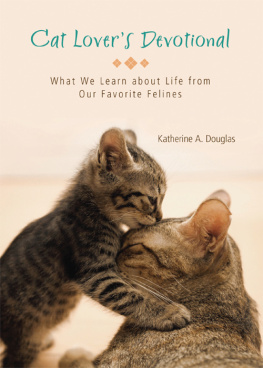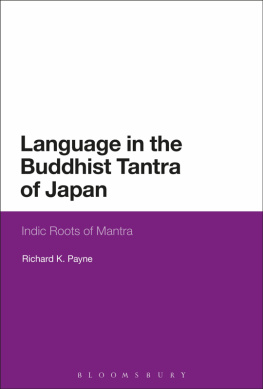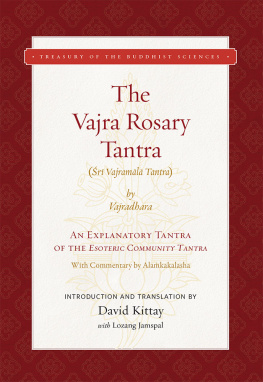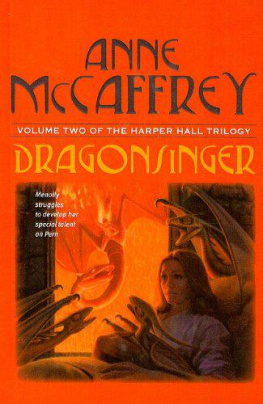Katherine Anne Harper - The Roots of Tantra
Here you can read online Katherine Anne Harper - The Roots of Tantra full text of the book (entire story) in english for free. Download pdf and epub, get meaning, cover and reviews about this ebook. year: 0, publisher: SUNY Press, genre: Science fiction / Religion. Description of the work, (preface) as well as reviews are available. Best literature library LitArk.com created for fans of good reading and offers a wide selection of genres:
Romance novel
Science fiction
Adventure
Detective
Science
History
Home and family
Prose
Art
Politics
Computer
Non-fiction
Religion
Business
Children
Humor
Choose a favorite category and find really read worthwhile books. Enjoy immersion in the world of imagination, feel the emotions of the characters or learn something new for yourself, make an fascinating discovery.

- Book:The Roots of Tantra
- Author:
- Publisher:SUNY Press
- Genre:
- Year:0
- Rating:4 / 5
- Favourites:Add to favourites
- Your mark:
- 80
- 1
- 2
- 3
- 4
- 5
The Roots of Tantra: summary, description and annotation
We offer to read an annotation, description, summary or preface (depends on what the author of the book "The Roots of Tantra" wrote himself). If you haven't found the necessary information about the book — write in the comments, we will try to find it.
The Roots of Tantra — read online for free the complete book (whole text) full work
Below is the text of the book, divided by pages. System saving the place of the last page read, allows you to conveniently read the book "The Roots of Tantra" online for free, without having to search again every time where you left off. Put a bookmark, and you can go to the page where you finished reading at any time.
Font size:
Interval:
Bookmark:

The Roots of Tantra
SUNY Series in Tantric Studies
Paul E. Muller-Ortega and
Douglas Renfew Brooks, editors
The Roots of Tantra
Edited by
Katherine Anne Harper
and Robert L. Brown
State University of New York Press
Published by
State University of New York Press, Albany
2002 State University of New York
All rights reserved
Printed in the United States of America
No part of this book may be used or reproduced in any manner whatsoever without written permission. No part of this book may be stored in a retrieval system or transmitted in any form or by any means including electronic, electrostatic, magnetic tape, mechanical, photocopying, recording, or otherwise without the prior permission in writing of the publisher.
For information, address State University of New York Press, 90 State Street, Suite 700, Albany, NY 12207
Production by Dana Foote
Marketing by Patrick Durocher
Library of Congress Cataloging-in-Publication Data The roots of Tantra / edited by Katherine Anne Harper and Robert L. Brown.
p. cm.(SUNY series in tantric studies)
Includes bibliographical references and index.
ISBN 0-7914-5305-7 (alk. paper)ISBN 0-7914-5306-5 (pbk. : alk. paper) 1. TantrismHistory. I. Harper, Katherine Anne. II. Brown, Robert L., 1944 Oct. 6
III. Series.
BL1283.83 .R66 2002
294.5514dc21
2001054184
10 9 8 7 6 5 4 3 2 1
Cover: A. P. Gajjar, Yoniand Lingam, 1975. (Private collection) 1. Buddha flanked by skull tappers. Gandhara, Pakistan. Ca. first-second century C.E (Courtesy of The Russek Collection) 12
2. Stone disk with Mother Goddesses. Patna, Bihar. Third century
B.C.E (Courtesy of the Archaeological Survey of India) 43
3. Ring Stone with relief of a Mother Goddess. Ropar, Punjab. Third century B.C.E (Courtesy of the Archaeological Survey of India) 44
4. Steatite stone tablet. Rajgir, Punjab. Third century B.C.E (Courtesy of the Archaeological Survey of India)
45
5. Anantasayin Vi.s.nu in yoganidra. Bhitargaon. Fifth to sixth century
C.E (Courtesy of the Archaeological Survey of India) 49
6. ryantra
51
7. Klyantra
54
8. Indus Valley seal impression Mohenjo-Daro, showing motif of symmetrically flanking goats with feet on central tree and mountain. (Courtesy of the Archaeological Survey of India) 100
9. Summerian cylinder seal showing symmetrically flanking goats with hooves on tree and/or mountain. Uruk Period. (Line drawing courtesy of Joyce Burstein)
100
10. Indus Valley seal impression showing dompteur motif. Mohenjo-Daro. (Courtesy of the Archaeological Survey of India) 101
11. Achaemenian seal showing Sumerian dompteur motif with central male figure flanked by griffenlike composite monsters. (Courtesy of The Morgan Library)
101
12. Indus Valley painted potsherd showing lion attacking bull.
Mohenjo-Daro. (Courtesy of Arthur Probsthain Publisher) 102
vii
viii
Illustrations
13. Sumerian cylinder seal impression showing lion attacking bull from behind. Uruk period, ca. 3000 B.C.E (Line drawing courtesy of Joyce Burstein)
102
14. Indus Valley seal impression showing a goddess in a tree with a bull god and seven vegetation spirits. Mohenjo-Daro. (Courtesy of the Archaeological Survey of India)
103
15. Sumerian cylinder seal impression showing a goddess in a tree with a horned god. Third millennium B.C.E (Line drawing courtesy of Joyce Burstein)
103
16. Babylonian seal showing entwined serpent pair homologized to human body. ca. 2000 B.C.E (Courtesy of Princeton University Press)
105
17. Indus Valley seal impression. (Courtesy of the Archaeological Survey of India)
106
18. Mlbandhsana. (Digital art courtesy of Joyce Burstein) 107
19. Yogsana Vignana demonstrated by Shirendra Brahmachari.
(Courtesy of Probashi Publishing Company)
108
20. Australian aboriginal ritual view. (Couretsy of International University Press)
109
21. Saptamt.rk Panel. Exterior of Cave 4. Udayagiri, Bhopal. Early fifth century C.E (Photograph by Katherine Anne Harper) 120
22. Detail of emblematic banners, Saptamt.rk Panel. Exterior of Cave 4, Udayagiri, Bhopal. Early fifth century C.E (Photgraph by Katherine Anne Harper)
120
23. Saptamt.rk Panel. Exterior of Cave 6, Udayagiri, Bhopal. Early fifth century C.E (Photography by Katherine Anne Harper) 121
24. Detail of emblematic banners, Saptamt.rk Panel. Exterior of Cave 6, Udayagiri, Bhopal. Early fifth century C.E (Photograph by Katherine Anne Harper)
121
25. Detail of emblematic banners, Saptamt.rk Panel. Exterior of Cave 6, Udayagiri, Bhopal. Early fifth century C.E (Photograph by Katherine Anne Harper)
122
The study of Tantrism as a specialized academic field has been a relatively recent phenomenon, perhaps stretching over only the last three or four decades; and, in the last few years, specialized studies dedicated to this often misunderstood subject have been published and received with increasing enthusiasm. This book is an initial study addressing origins in that it attempts to seek out and understand some of the nascent forms and sources of Tantrism in ancient India. The volume grew out of two conferences held in the greater Los Angeles area in October 1989 and March 1995 that were devoted specifically to fleshing out the meager evidence on early Tantrism. It is a matter of great satisfaction that so many scholars have worked to address questions concerning the origins and have shaped careful and detailed responses, particularly given the paucity of material remnants, both archaeological and textual, known at this time. The reader will encounter various approaches to the general topic concerning roots and origins; the diversity is the result of specific disciplines and backgrounds, each scholar bringing unique insights to the general topic. By no means does this volume attempt to be comprehensive; the problems involved in uncovering inchoate elements giving rise to Tantrism and its early manifestations are far too broad to be bound in a single volume. What we hope to accomplish is to pose a body of new questions and stimulate new dialogue and research in the field of Tantric studies.
The editors wish to thank the many participants for their excellent contributions and their great patience. In addition, we would like to thank the Society for Tantric Studies, Loyola Marymount University and the University of California at Los Angeles for various forms of support along the way.
Katherine Anne Harper
ix
Robert L. Brown
Stellas personal spiritual teacher was a wandering aivite Tantric monk who belonged to the Aghori orders... He tested her through a drastic aiva experience in which she was to follow him to the Kalighat temple, where he had her ascend a funeral pyre and sit on a corpse that was about to be cremated.... Then he told her to gather the ashes, take them home, and rub them on her body.
Barbara Stoler Miller, Exploring Indias Sacred Art Barbara Miller describes an experience in the life of Stella Kramrisch that took place sometime in the 1920s or 1930s in Calcutta. A pioneer in Indian art history, her volumes on the Hindu temple and studies of iva have defined the field. Miller goes on to say, Throughout the entire happening she [Stella] had implicit faith in its validity as a ritual that confirmed her in her fearlessness and let her understand life with a lightened heart.1 I bring up this incident because it appears rather outside the bounds of Tantric research and scholarship. It is so highly idiosyncratic and unusual2 that it causes one to wonder if it actually happened. It fits, however, with the individualistic and personalized nature of Tantric practices. No one would find it hard to identify the episode as Tantric, despite difficulty in associating it with a specific ritual or text. What Kramrisch derived from the experience was a sense of power and a feeling of well-being, both Tantric goals.
Next pageFont size:
Interval:
Bookmark:
Similar books «The Roots of Tantra»
Look at similar books to The Roots of Tantra. We have selected literature similar in name and meaning in the hope of providing readers with more options to find new, interesting, not yet read works.
Discussion, reviews of the book The Roots of Tantra and just readers' own opinions. Leave your comments, write what you think about the work, its meaning or the main characters. Specify what exactly you liked and what you didn't like, and why you think so.




